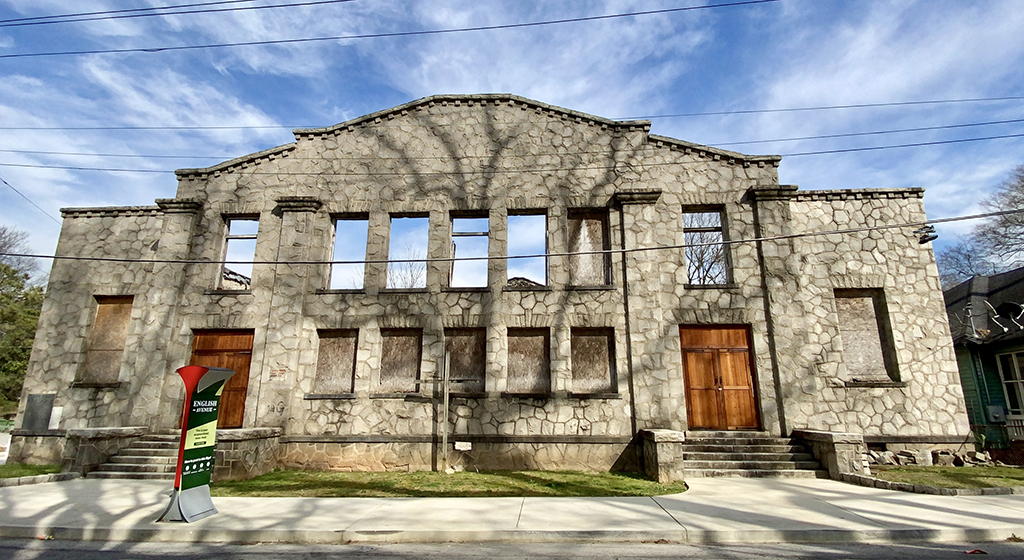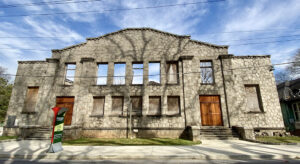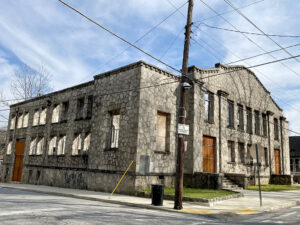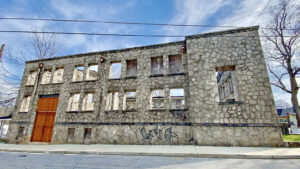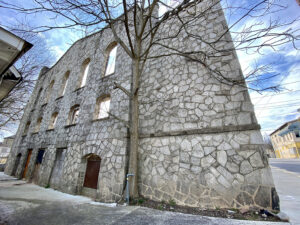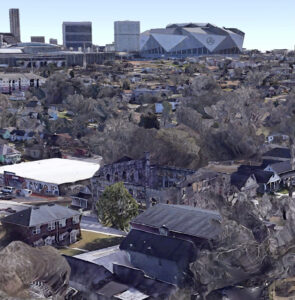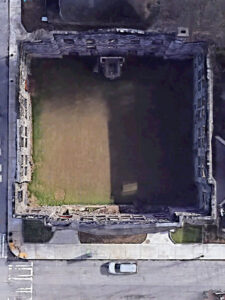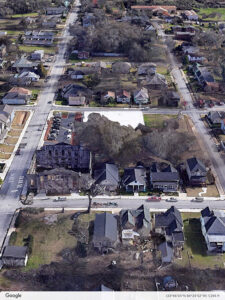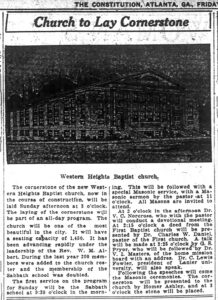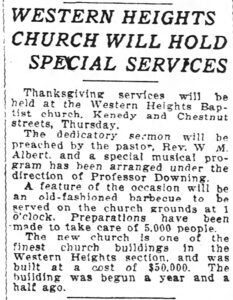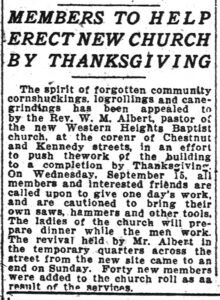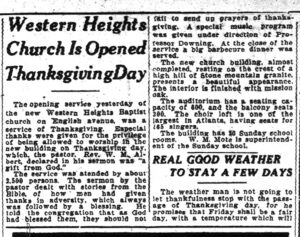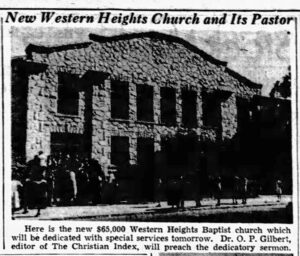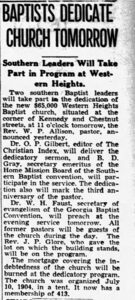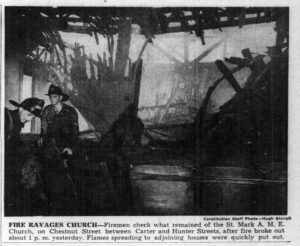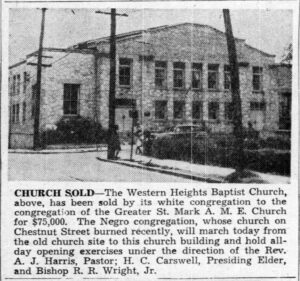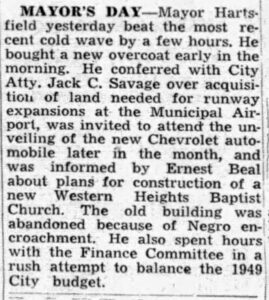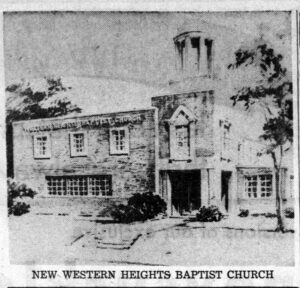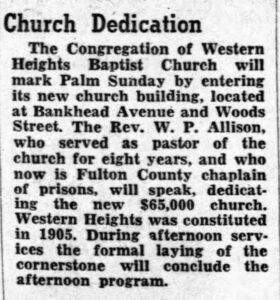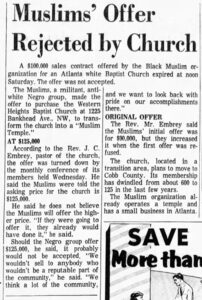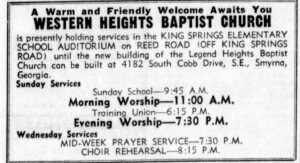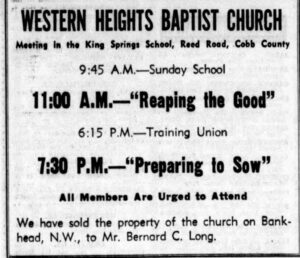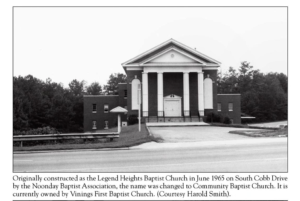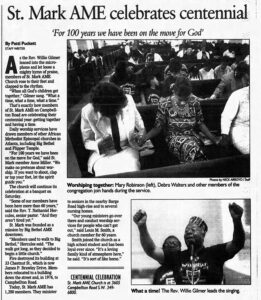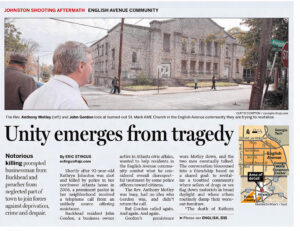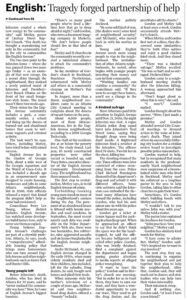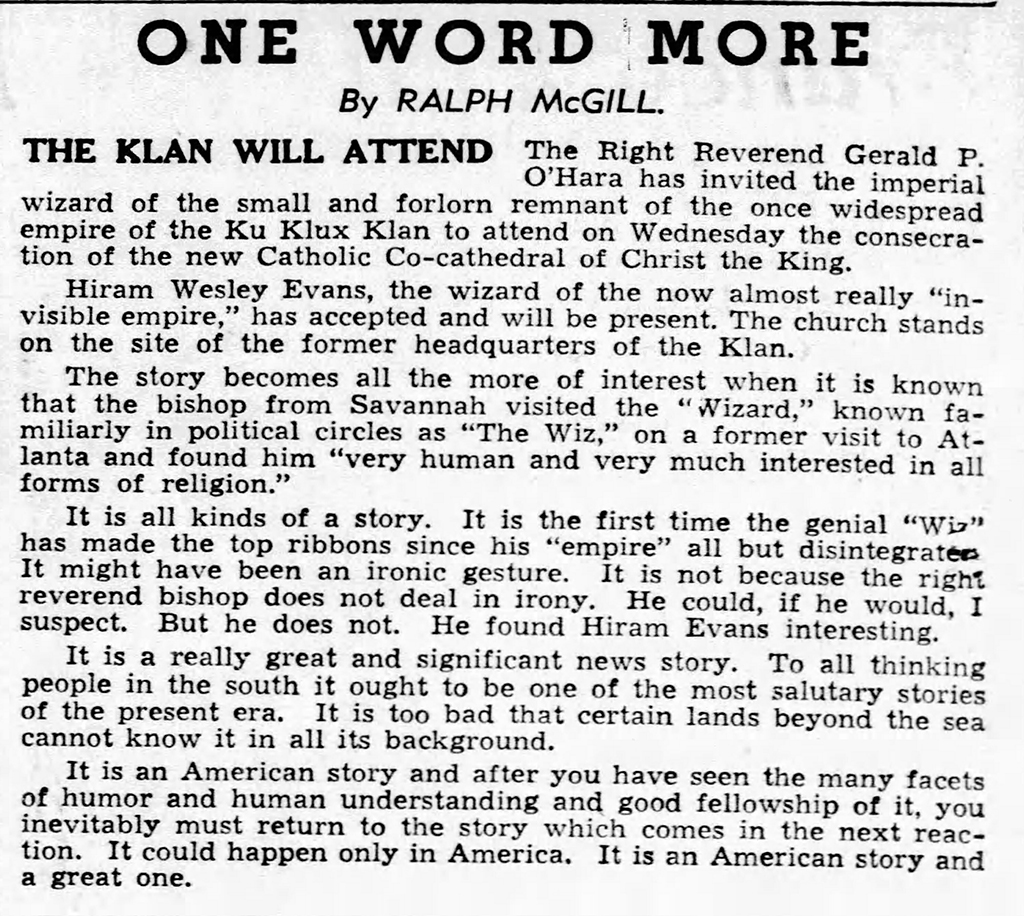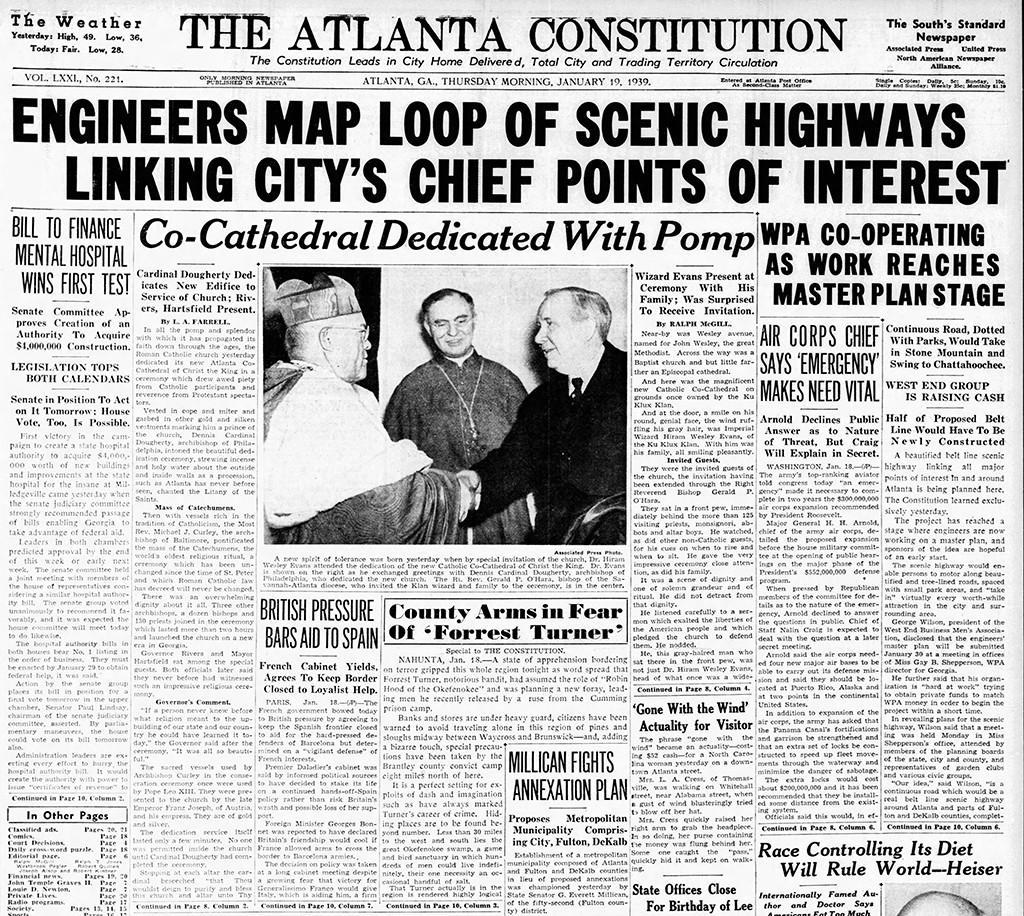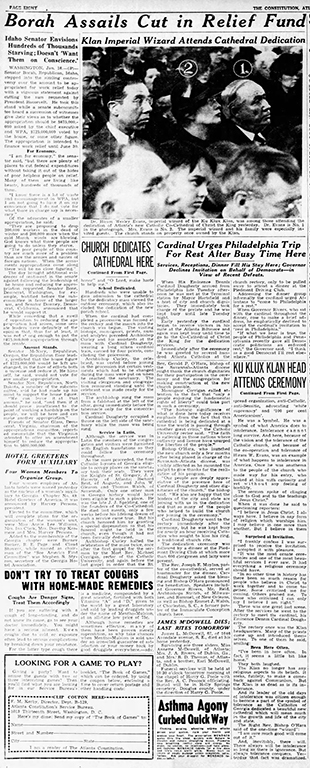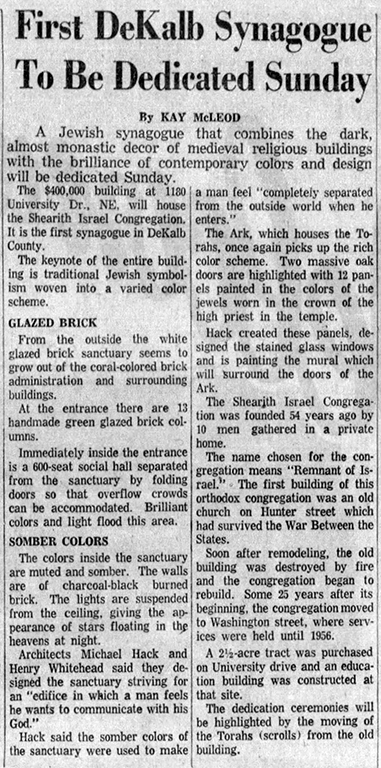When I first heard Amanda Gorman's inspiring inaugural poem, "The Hill We Climb," of course I instantly thought of Stone Mountain and "the past we step into and how we repair it." Such a sentiment has spoken to me over the years, too, as I’ve mapped the use of Stone Mountain granite throughout Metro Atlanta (and beyond), like piecing together a puzzle, as the wide use of the stone in our infrastructure can tell us a lot about our shared, often complicated history we're constantly shaping (eg. historic homes, universities, churches, parks, prisons, orphan homes, cemeteries, stairs and curbing, culverts, retaining walls, statue pedestals, and more).
So, naturally, I’m especially interested in the Atlanta Preservation Center’s upcoming presentation about St. Mark A.M.E. on March 13 (check listings), as this edifice stands among those I’ve researched. Though I’m not sure how deep this event will delve into the past based on the program listing alone, the title of the event — “Understanding Our History Will Help Us Better Understand Our Future” — signals to me that a balance will be struck while primarily looking ahead to the promising redevelopment plan for Westside Atlanta within the model of The Beloved Community.
For me, the 83 year-old remnants of this particular structure near perfectly illustrate some of the key issues of race, class, and religion, at work in some, though certainly not all, cases where Stone Mountain granite was used, struggles which still persist throughout our country today. Since the event only has space for 10 people and may now be full, I’ve compiled a quick historical reference, mostly though a newspaper “timeline” about these stirring “ancient ruins,” to better navigate “this mountain we must climb.”
As always, there’s a great deal more to the history of Atlanta from a multitude of voices, perspectives, and angles, but for this post, the focus is mainly on the striking exterior of First St. Mark Church, which awaits transformation and helping hands, a space which ultimately served the St. Mark A.M.E. congregation much longer than it ever did Western Heights Baptist Church. And it isn’t the only historic property in Atlanta with an ironic twist of ownership either, nor will it be the last. Two come to mind right away (see gallery below): Christ the King Catholic Church, which was dedicated on the former site of the national Klan headquarters on January 19, 1939 (Imperial Wizard Hiram Evans even attended). And Shearith Israel, which officially became the first synagogue in Dekalb County, GA, in 1958, when it moved from Washington St. downtown to the former campus of Lanier University, the short-lived Baptist “Klan College” that operated from 1917-1922 in the Morningside/Lenox Park area, in addition to other local properties elsewhere. In fact, the Canterbury School, a non-profit preschool, also operates out of an original building on the old Lanier University campus, the Greek Revival replica of Arlington Hall, the Robert E. Lee Memorial in Virginia.
St. Mark A.M.E.
1895 — First location at 33 Chestnut Street (between Carter and Hunter Streets). Founded as a mission by Big Bethel A.M.E. downtown (Big Bethel is constructed of Stone Mountain granite).
1948-1976 — Second location at 491 Chestnut Street (Kennedy and Chestnut St., now Cameron M. Alexander Blvd. & James P. Brawley Drive). A fire destroyed the church on July 3, 1948, and the Black congregation marched to their new house of worship on October 3, 1948, which was formerly Western Heights Baptist Church, a White congregation. The helpful church history found on its website suggests that "the huge stone edifice, formerly the historical Western Heights Baptist Church, was said to be a hiding place for soldiers during The Civil War," but this could not be true based on the dates. However, the name "Western Heights Breastworks" from Atlanta's Civil War history perhaps inspired the previous church's name.
1976-Current — Third location at 3605 Campbellton Rd., SW (Corner of Barge Rd.).
Western Heights Baptist Church
July 10, 1904 — First organized at Kennedy & Chestnut St. (now Cameron M. Alexander Blvd. & James P. Brawley Dr. NW.) as Western Heights Christian Mission (Sunset & Kennedy, according to Atlanta-Constitution).
1920-1938 — Official church erected on English Avenue (now known as the English Avenue Community). This was the first official location for Western Heights Baptist Church, proper, which rushed to open by Thanksgiving Day in 1920. Yes, five years to the day after the Second Era Klan was formed on Stone Mountain on Thanksgiving Day in 1915.
1938-1948 — Second church building dedicated, constructed of Stone Mountain granite. The walls still stand today in the badly rundown area and are guarded by a security camera.
So why did the church build with the granite? There are any number of possibilities, one of which may involve its wide use during the WPA years. But the date of the church's previous opening on Thanksgiving Day 1920, coupled with the detail that a former director of Lanier University, the Baptist “Klan College” (1917-1922), gave the church’s dedicatory speech then, immediately made me link it to the Klan, which had owned Lanier for a few years and had also been accused of fraud and other serious graft. Other officials at Lanier included head Klansmen, William J. Simmons, and Nathan Bedford Forrest, II, who also served on the Stone Mountain Memorial Association. (Lanier University will be a post by itself at some point, as will many other institutions mentioned here that merit more detailed analysis).I also wondered if longtime pastor, Rev. Bill Allison, who was also concurrently chaplain of prisons, helped procure the granite through his dealings with the main penitentiary (itself made of Stone Mountain granite), where inmates once worked on granite slabs on site as well as in the area quarries.
As mentioned above, this building would become the historic St. Mark A.M.E. house of worship after fire destroyed their nearby church at the start of the Fourth of July weekend in 1948, and Western Heights Baptist relocated to due to "Negro encroachment," according to a newspaper item from January 7, 1949 (see below gallery of articles). To put it mildly, it's hard to ignore the evidence of racial tension in that community at that time.
1949-1965 — Third church dedicated on April 9, 1949, at then 1225 Bankhead Ave. & corner of Woods St. (intersection and structure may no longer exist). The church was sold in 1965 (not without controversy for refusing cash offer of a Muslim group that sought to build a mosque), and then relocated to Cobb County and renamed itself Legend Heights Baptist Church. Today the building is occupied by Vinings First Baptist Church. Today there is another Western Heights Baptist Church in LaGrange, GA, but I do not know if they are affiliated beyond name.

